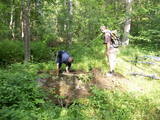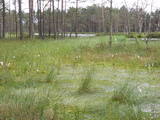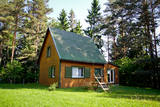| Нo | Название | Описание |
|---|---|---|
|
The tour presents UNESCO World Heritage Sites and the Intangible Cultural Heritage of Latvia and Estonia. Experience the famous traditions of song, national crafts, architecture and food of the unique Suiti and Seto ethnic groups. |
||
|
В невероятно красивом месте неподалеку от Отепя, окруженный лесами и горами, Вас ждет Cantervilla loss. Отличное место для семейного отдыха. Детей ждет большой игровой парк. В ресторане можно и поужинать в романтичной обстановке, и организовать обед во время семинара. |
||
|
Autentiskā Zypliu muižas vidē izveidots restorāns. Kulinārais mantojums - Lietuvas muižniecības ēdieni. Ēdināšana, degustācija, izglītības programmas. |
||
|
Остатки серного источника "Лягушечка"
– сегодня только знаток или старательный
поисковик в лесу между гостиницей "Кемери" и
"Межа Мая" найдет место когдато известного,
но уже бывшего серного источника, который
опознается по поврежденным человеком и
временем железобетонным конструкциям.
|
||
|
This is one of the largest areas of swampland in Latvia, lying between Lake Babīte and Olaine. Most of the area is still made up of peat. Relatively untouched is the northern part of the swamp, where there is a lovely set of swamp lakes, featuring landscapes of moss swamps. The heath is one of the few swamps in Latvia where the western-type and eastern-type swamp coexist. This is an important location for protected birds. A nature trail and viewing tower are to be installed at the heath in the near future.
|
||
|
Das Museum befindet sich in der Festung von Kopgalis. Im Aquarium des Museums sind Fische und Tiere der Ostsee und anderer Meere und Ozeane zu sehen. Eine Ausstellung. Pinguine und Seehunde. In den Pulverkellern der Festung ist eine Ausstellung der Seefhrt Litauens, aber auf den Bollwerken eine Ausstellung der Gewehr eingerichtet. Das einzige Delfinarium im Baltikum. |
||
|
Первая большая гидроэлектростанция в Латвии, строительство которой было начато в 1936 году (архитектор Э. Лаубе). Первый гидроагрегат (мощностью 17 МВт - крупнейший в странах Балтии) начал действовать в 1939 году. В период с 1976 – 1979 годы было проведен второй этап строительства ГЭС, в результате которого на левом берегу Даугавы построили новое здание, установили три агрегата, увеличив таким образом мощность ГЭС до 260 МВт. Еще одна реконструкция ГЭС прошла на левом берегу Даугавы (ГЭС – 2) в период с 1998 - 2001 годы, где сейчас расположен музей Энергетики. Посещение объекта проходит по предварительной записи! |
||
|
Litorīnas jūras laikā (pirms ~ 6000 gadiem) Saleveres Salumegi kalns bija sala, bet mūsdienās tas kā izteikta kāple (īpaši - ziemeļu pusē) paceļas virs Piejūras līdzenuma. Salumegi ziemeļu pusē slejas 4 - 5 metrus augsts kaļķakmens atsegums – silūra perioda (> 400 mlj. gadu) koraļļu rifa paliekas, kuru noskalojuši Litorīnas jūras viļņi. Atseguma piekājē izplūst Acu avots, kam piedēvē dziednieciskas īpašības. Salumegi apskates nolūkos izveidota lokveida taka (1,5 km). No kalna augšas paveras labs skats uz Matsalu līci. Šeit atradies arī sens pilskalns. |
||
|
The owners have made sure that everyone can buy fresh and processed fishery products from local producers. During the summer, on the terrace, you can listen to Mazupīte's water, enjoy freshly grilled fish, as well as enjoy particularly delicious cakes, coffee and ice cream. |
||
|
Банные ритуалы, во время которых банщик, используя веники и чаи из разных растений, помогает укрепить здоровье, освободиться от усталости и стресса, зарядить организм новой энергией. Тело освежается и закаливается. Предлагаются разные виды массажа, очищающие пилинги и маски. |
||
|
Коттедж “Sala” и баня у озера Вертукшнес предлагает занятия и услуги, направленные на практикование здорового образа жизни. Очищение организма, лечебные курсы по снижению веса, терапия цветом или лечебное светолечение с помощью аппарата Bioptron pro 1. |
||

















